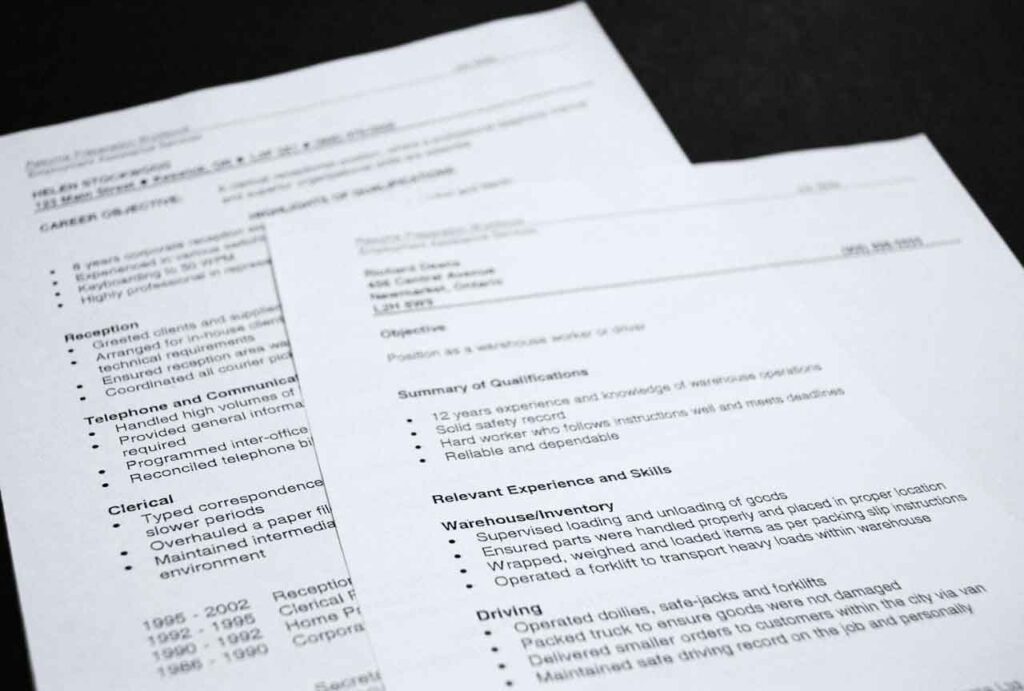Job searching can often feel like a full-time job in itself, especially when months of effort result in little to no progress. For many, the frustration isn’t just about not landing a job, it’s about not even securing interviews. Submitting hundreds of applications and hearing nothing back is a common yet deeply challenging experience.
What makes it tougher is how few applications even make it past the first filter. Today’s hiring systems automatically reject up to 98% of online applications, and around 70% never reach an actual recruiter, which explains why so many candidates feel invisible in the process.
Research shows that in 2024, it took candidates an average of 247 days and about 221 applications to finally secure a new role, underscoring just how demanding and drawn-out the process has become.
The issue often lies beyond the surface of typical advice. It’s not always about having an impressive resume or meeting the qualifications. The reality is that many job seekers unknowingly make strategic missteps in how they apply, the platforms they use, and the way they present themselves to potential employers.
I. Why Applications Get Ignored Despite Effort
1. The Overwhelming Competition Problem
When applying to roles that attract hundreds or even thousands of candidates, standing out becomes exponentially harder. Mass applications from job seekers across various regions dilute the visibility of any single applicant.
- Volume Without Strategy: Sending the same application to dozens of roles may save time but drastically reduces relevance to each specific position.
- Global Accessibility: Remote opportunities often attract applicants worldwide, exponentially increasing competition for every role.
2. Overlooked by Automated Systems
You should know that 98% of large organizations and 66% of mid-sized companies employ Applicant Tracking Systems (ATS). These systems are designed to filter resumes before they reach human eyes, but even qualified candidates often fail to make it past this stage. Submitting resumes in incompatible formats or neglecting to include critical keywords aligned with job descriptions can cause your application to be automatically rejected.
- Formatting Challenges: Resumes with images, tables, or unconventional layouts can confuse ATS software. Using a clean, standard format with clear sections improves compatibility.
- Missing Keywords: Each job description is unique, and failing to align your resume’s language with its requirements can make it seem irrelevant, even if you’re a strong candidate.
3. The Reality of “Ghost Jobs”
Many positions listed on job boards are either placeholders for potential openings or roles employers are not actively trying to fill. These listings waste applicants’ time and energy.
- Inactive Postings: Jobs that have been filled but remain listed create confusion and unnecessary effort.
- Pipeline Building: Some companies advertise roles solely to gather a pool of candidates for future needs, with no immediate intention to hire.
4. One-Size-Fits-All Applications Fall Short
Generic resumes and cover letters fail to highlight why you’re the right fit for a specific role. Employers seek candidates who demonstrate a tailored understanding of the position and its requirements.
- Lack of Personalization: Using the same language and structure for every application signals a lack of genuine interest.
- Missed Opportunities to Showcase Fit: Customizing your achievements and experience to align with the role significantly increases your chances of being noticed.
5. Missed Connections Through Networking
Relying solely on job board submissions without leveraging professional connections or referrals limits your opportunities. Many jobs are filled through internal recommendations or direct referrals, bypassing the traditional application process.
- Underutilizing LinkedIn: Engaging with recruiters, hiring managers, or industry professionals on LinkedIn can provide direct pathways to interviews.
- Failing to Leverage Existing Contacts: Reaching out to colleagues, friends, or acquaintances in the industry is a strategy often overlooked yet highly effective.
II. How to AB Test Your Resume Like a Pro
AB testing your resume involves systematically experimenting with different elements to identify which version produces the best results. This approach ensures that you refine your resume based on measurable outcomes rather than assumptions. Below are actionable steps to help you conduct an effective AB test:
1. Start with a Baseline Resume
Your baseline resume should reflect your current application strategy. Ensure that it:
- Includes a clear structure with professional formatting.
- Highlights your most relevant skills and experiences for the type of role you are targeting.
- Contains standard keywords typically required for your desired positions.
2. Define the Variables You Want to Test
Focus on one change at a time to accurately measure its impact. Common variables to test include:
- Format: Experiment with chronological, functional, and hybrid formats. For instance, functional resumes focus on skills, while chronological ones emphasize work history.
- Headline and Summary: Test different headline styles or rewrite the summary to make it more concise or keyword-rich.
- Keywords: Incorporate additional job-specific keywords from different postings and analyze which ones resonate better.
- Experience Descriptions: Reword bullet points to focus on achievements versus responsibilities.
3. Create Two Resume Versions
Prepare two distinct versions with only one variable changed between them. This allows you to isolate and identify the impact of that specific adjustment. For example:
- Version A: Standard chronological format.
- Version B: Functional format highlighting specific skills.
4. Track and Measure Results
Submit each resume version to an equal number of job applications to gather comparable data. Use the following metrics to measure performance:
- Interview Requests: Track how many callbacks or interview invitations you receive from each version.
- Recruiter Engagement: Use tools like LinkedIn to monitor if recruiters view or download your resume.
Maintain a simple spreadsheet to document where and when each version was submitted, as well as the outcomes.
4. Refine Based on Insights
After collecting data, analyze the results to determine which version performed better. For example:
- If Version B generates more interviews, consider adopting its format for all future applications.
- Incorporate the successful elements into your baseline resume to create an optimized version.
5. Use Tools to Optimize the Process
Several tools can make AB testing more efficient:
- Resume Analyzers: Platforms like Jobscan or ResyMatch.io can compare your resume against job descriptions and suggest improvements.
- Application Tracking Systems (ATS) Testers: Test whether your resume is ATS-friendly to ensure it passes the initial screening stage.
- Recruiter Feedback: If possible, request feedback from recruiters about what worked or didn’t in your resume.
6. Continuously Iterate for Long-Term Success
AB testing is not a one-time exercise. As you apply for different roles or industries, keep revisiting and refining your resume. Trends and expectations evolve, and staying adaptable ensures your resume remains competitive.
By systematically testing and refining your resume, you can significantly improve your chances of getting noticed and securing interviews by using the resume that generates the most chances.

Also Read: 10 Resume Do’s and Don’ts That Can Make or Break Your Application
III. Platform-Specific Strategies to Maximize Your Reach
Different job platforms cater to unique audiences and hiring practices. Understanding and tailoring your approach to each platform ensures your applications are targeted effectively. Below are strategies to optimize your efforts on popular platforms:
1. Optimizing for LinkedIn
LinkedIn is a powerful tool for job seekers when used strategically.
- Complete Your Profile: Ensure every section is filled out, including your headline, summary, skills, and endorsements. A complete profile ranks higher in recruiter searches.
- Leverage LinkedIn Keywords: Use industry-specific keywords in your headline and skills section to increase visibility in search results.
- Engage Actively: Regularly interact with posts from industry leaders, join relevant groups, and share content that highlights your expertise.
- Reach Out to Recruiters: Use LinkedIn’s messaging feature to introduce yourself professionally to recruiters and hiring managers. Attach a tailored resume when initiating contact.
Also Read: How To Use LinkedIn Effectively For Job Search (3 methods)
2. Maximizing Job Boards (Indeed, Glassdoor, and Monster)
Job boards remain essential tools, but proper usage is key to maximizing returns.
- Create Custom Alerts: Set up alerts for specific roles to apply as soon as they’re posted. Early applications often receive more attention.
- Tailor Your Profile: Many platforms allow you to create a public profile. Ensure your uploaded resume matches the format and language expectations of the platform.
- Use Advanced Search Filters: Narrow down roles by location, salary, and other criteria to target the most relevant opportunities.
- Engage with Employer Reviews: Platforms like Glassdoor let you assess company culture and tailor your applications accordingly.
3. Exploring Niche Job Platforms
Many industries have specialized platforms for job seekers.
- Industry-Specific Sites: For example, tech professionals can leverage platforms like AngelList or Stack Overflow, while creatives can focus on Behance or Dribbble.
- Networking-Focused Communities: Websites like GitHub for developers or ResearchGate for academics allow you to showcase your work and connect with employers directly.
- Government and Local Job Boards: Often overlooked, these platforms provide access to public sector opportunities and roles within your region.
4. Applying Directly on Company Websites
Many companies prefer candidates who apply directly through their websites.
- Research Target Companies: Identify organizations that align with your career goals and explore their career pages regularly.
- Join Talent Networks: Many companies offer the option to join their talent networks for future opportunities.
- Tailor Each Application: Applications submitted through company portals often bypass third-party filters, so ensure each submission is highly customized.
IV. Building a Strategy for Long-Term Success
A sustainable job search strategy focuses on consistency, continuous improvement, and proactive networking. Here’s how to develop one:
1. Set Clear, Achievable Goals
Approach your job search with specific, measurable objectives.
- Daily or Weekly Applications: Determine a realistic number of tailored applications to submit each week.
- Skill Development Targets: Identify skills that will enhance your candidacy and allocate time for courses, certifications, or projects.
- Networking Milestones: Aim to connect with a set number of industry professionals weekly.
2. Expand and Maintain Your Network
Building and nurturing professional connections is critical for uncovering hidden opportunities.
- Attend Industry Events: Whether virtual or in-person, networking events can introduce you to potential employers.
- Join Professional Associations: Many industries have associations offering networking opportunities, job boards, and resources for members.
- Stay in Touch: Regularly follow up with contacts to maintain relationships and stay informed about opportunities in their networks.
3. Evaluate and Adapt Regularly
Consistently assess your job search performance and refine your strategy.
- Track Progress: Maintain a log of applications, responses, and feedback to identify patterns.
- Adjust Based on Results: If one platform or approach isn’t yielding results, shift focus to more effective methods.
- Seek Feedback: Connect with mentors, peers, or career coaches for insights on improving your strategy.
4. Balance Persistence with Self-Care
A prolonged job search can be stressful, but maintaining balance is key to long-term success.
- Allocate Time for Rest: Avoid burnout by setting boundaries for your job search activities.
- Celebrate Small Wins: Acknowledge progress, such as securing interviews or building valuable connections, even if they don’t immediately lead to offers.
The job market is more competitive than ever, with challenges at every step of the application process. Success requires refining your approach, staying strategic, and exercising patience. By adopting tailored methods and focusing on what truly works, you can position yourself to stand out and achieve your career goals, even in today’s demanding market.



